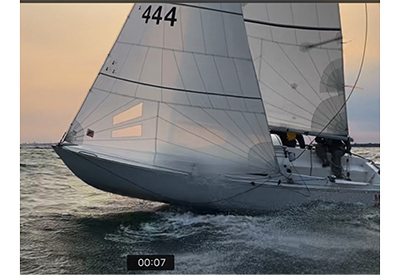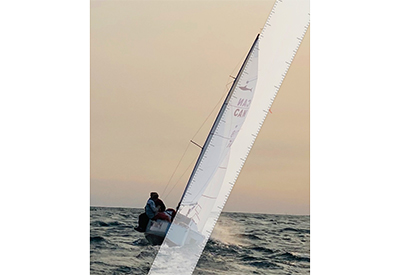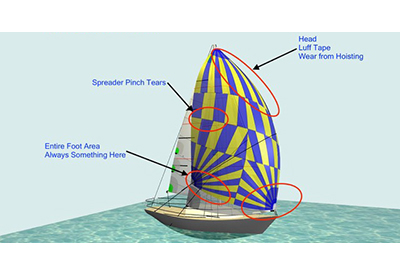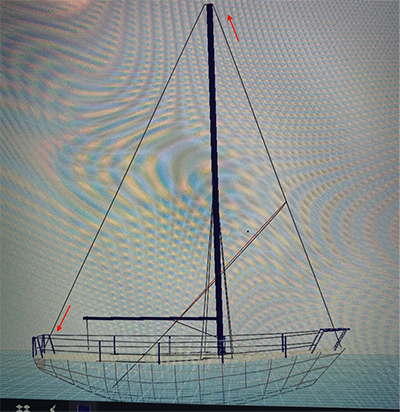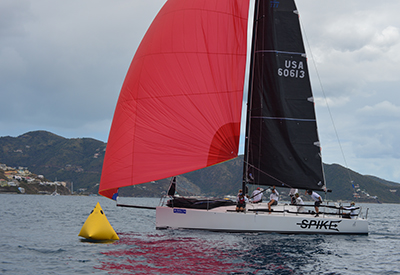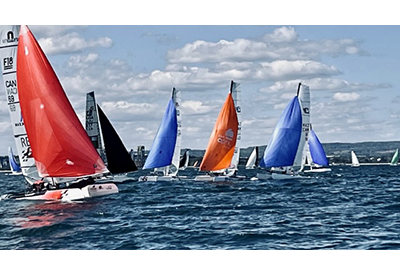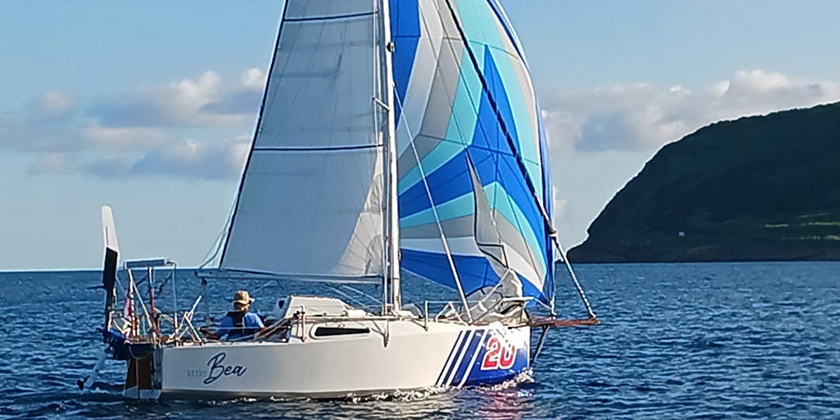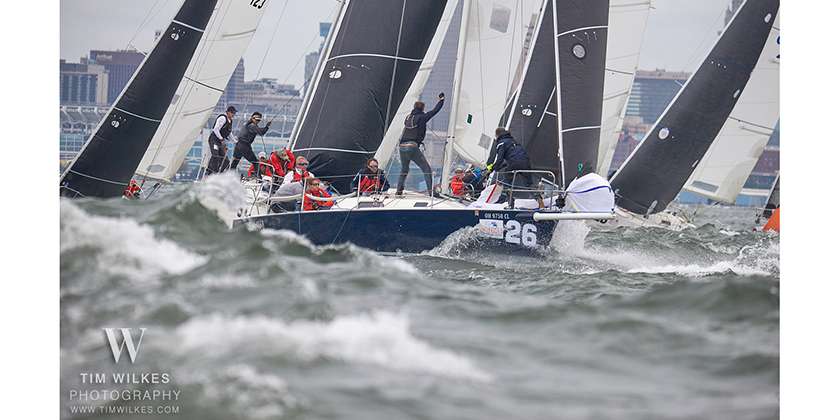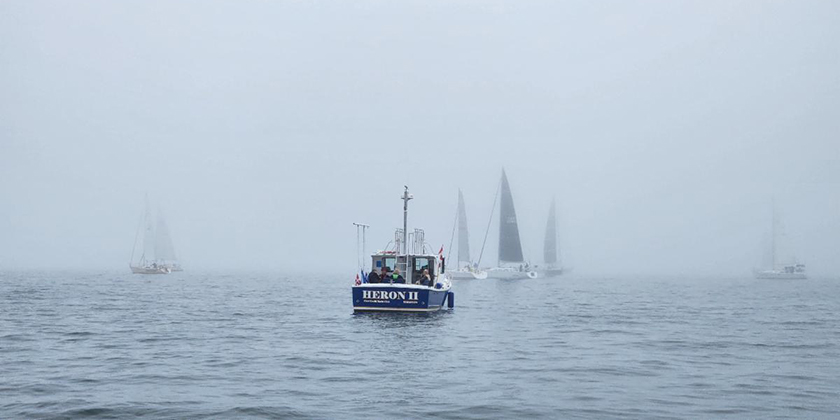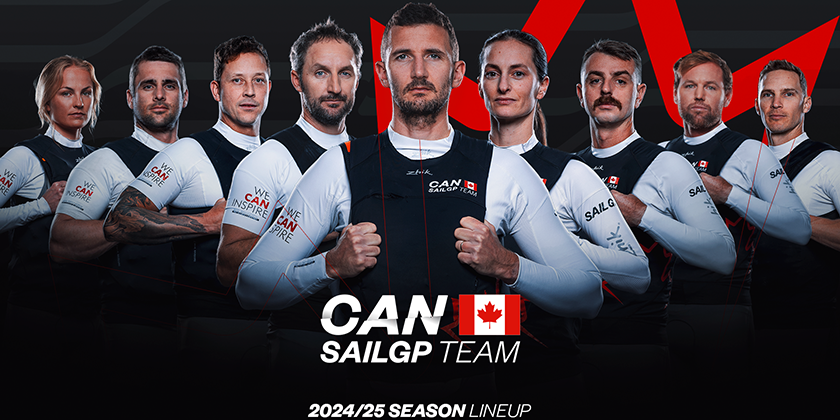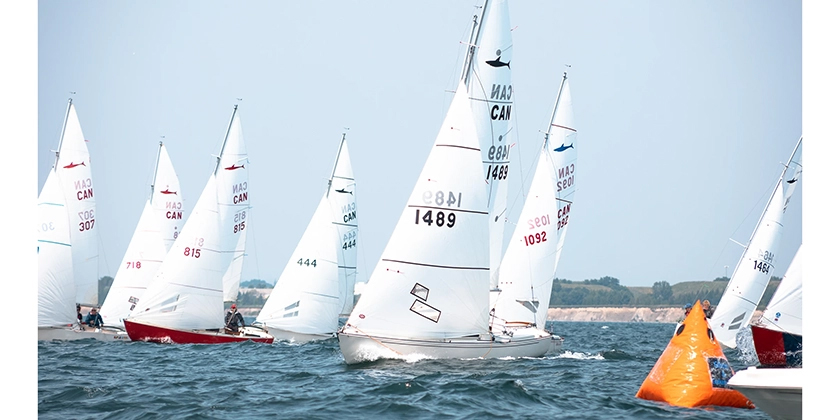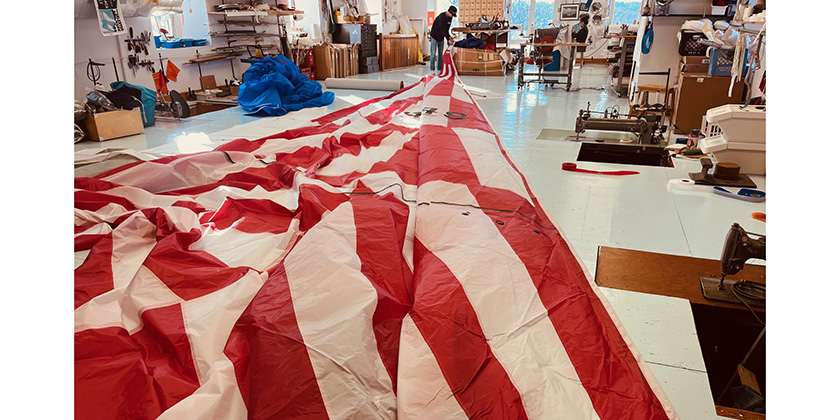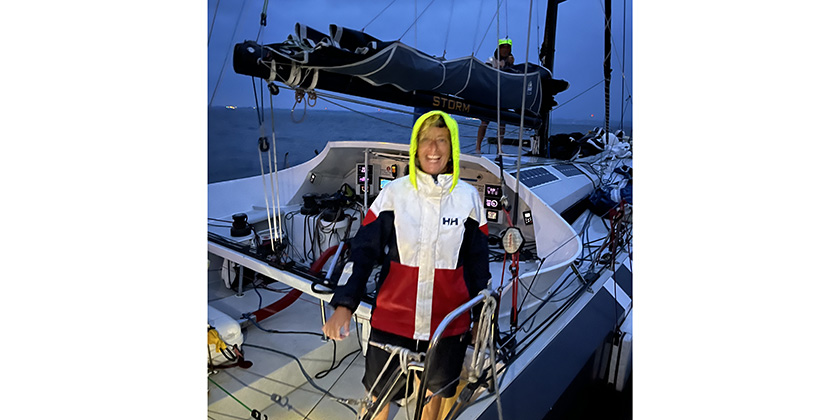Keven Talks Sails: Sailing in Waves
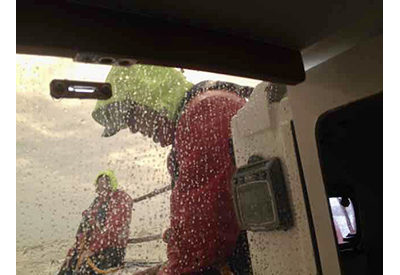
July 5, 2023
HEAVY WEATHER SAILING TIPS
When the wind builds waves also build creating large choppy waves and gradually increasing swells. These waves slow down your boat when you are trying to make windward progress. Every wave is like climbing a hill or punching through a wall, especially when the wind gets over 25 knots.
To get your boat to sail efficiently, you will have to bear off and foot the boat to get enough power to drive upwind in the green mountains water. Don’t think that your normal close-hauled angles are achievable and once the wind gets into the mid 30’s, it is impossible to hold a close-hauled course because of the wave forces and wind drag that reduce the efficient lift to drag ratios that make sailboats sail so well to weather in normal conditions.
Fig 1 – One of those windy days
Hint 1 – Keep the boat driving
You need lots of excess power to accelerate the boat as the waves try to slow you down. If you get too slow, your underwater lift from your keel, rudder and hull quickly disappears. This leads to terrible steering authority and high leeway angles. Low down power from short hoist sails with relatively long foot lengths will keep the heel down and give you the drive needed to keep your momentum. ISAF Heavy Weather (HW Jib) Jib designs with relatively short hoists and longer foot lengths work well for this application. This type of jib has an area not greater than 13.5% of the height of the foretriangle squared. If you keep the boat driving, it will hold its course and get you to where you need to go.
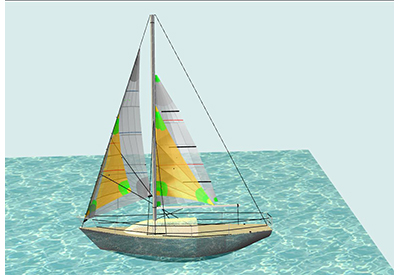 Fig 2 – Heavy Weather Sail Options
Fig 2 – Heavy Weather Sail Options
Hint 2 – Boat speed is more important than apparent wind
As you are plowing through the monster waves, find the balance between the apparent wind and the power you need for your sail setting. If you are getting slow, you can head up slightly to increase your apparent wind and get more power. I know this sounds a bit opposite to the first comments about not sailing your normal pointing angles, but the power of apparent wind force goes up by the fourth power and will generate WAY too much power if you sail tight angles upwind. This effect allows you to throttle the boat through the waves by sailing broader to reduce power and head up slightly to build power if you need it. The angles I’m talking about are still broad, like 45-70 degrees apparent.
Finding the balance of sail set, angle and wind angle will keep the boat moving authoritatively through the seas. If you get too slow, the boat will stall in the water and get tossed around uncomfortably with very little control. Speed gives control and dampens the pitching and yawing.
Hint 3 – Less sail area is more
When it is really windy, the puffs tend to be large in magnitude. If it is blowing 30 knots, a 40-knot blast is very likely.
For reference to the concept of load with wind, here is the example of an 18 m2 storm sail aerodynamic load in various wind strengths.
10 Knots – 291 N (~29 kg)
20 Knots – 1167 N (~119 kg)
30 Knots – 2626 N (~270 kg)
40 Knots – 4668 N (~476 kg)
50 Knot – 7295 N (~744 kg)
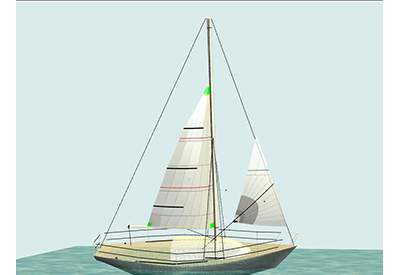 Figure 3 – Double Reef and Furled Genoa
Figure 3 – Double Reef and Furled Genoa
You can see the huge power change with wind speed. To develop the same power in 10 knots as that small 18m2 storm sail, it would have to be 170m2, or just under 10 times larger. This should highlight why you need much smaller sail area in very strong winds than you normally would use.
Every sailor over-canvasses their boat over 25 knots or so because the shortened sails look so small and they aren’t used to it. Go out for a sail in 8-15 knots, double reef the main and use your smallest headsail in the inventory or only unroll 60-70% of your foretriangle worth of genoa. Get your sail trim tidied up and get the boat moving and make every part of those small sails work. Good sail trim and careful conservation of momentum will get your boat close to hull speed with very little difficulty. Heavy weather sailing shouldn’t be any more difficult than sailing with a full sized sailplan in 15 knots. Scale down your sail area and learn how to balance the forces to get the boat to sail well in all conditions.
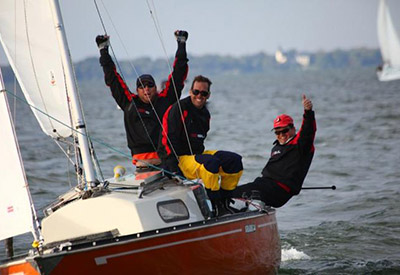 Keven Piper, two-time Shark 24 World Champion, founded Hamilton, ON-based Bay Sails in 1998. Email: baysails@gmail.com
Keven Piper, two-time Shark 24 World Champion, founded Hamilton, ON-based Bay Sails in 1998. Email: baysails@gmail.com

